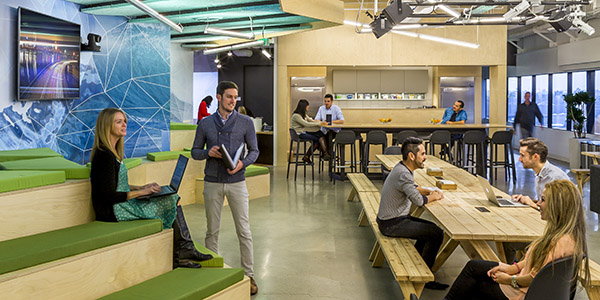
Once upon a time, the company conference room was a mysterious place where only select employees met about sensitive business matters behind closed doors (catered lunch, of course). But now, conference rooms across the world are becoming like your home’s kitchen – the place where everyone gathers at the same time.
Making conferencing possible by anyone in the company – at any time and from any location – is essential in the 21st century. Conference room technology should be ubiquitous, allowing team members to share their work with an in-person group, as well as others joining the meeting from remote locations. But that’s easier said than done. The array of technical connection options is only surpassed by the complexities of making them interoperable.
The worlds of phone systems, videoconferencing, virtual presence and shared content have been converging for quite some time. In a perfect world, an end-user should be able to create a meeting invite, send the invite to participants, and have faith all invitees can easily join the meeting. Whether the invitees are sitting in the conference room, at their desk down the hall (or in another city), or waiting at an airport gate, a successful meeting depends on the ease with which the invitees can join and participate fully in the meeting. Technologies under the banner of web conferencing or unified communications have made that basic desire closer to reality, but far from universal. Microsoft’s Skype for Business (formerly known as Lync) and Cisco’s WebEx have emerged as the 800-pound gorillas, each providing a tool to connect people regardless of location and device, but there are many other competitive virtual meeting room solutions on the market.
Conference rooms are now extensions of individual workspaces. They have evolved from upper management conclaves into multi-use rooms where meetings are centered on displaying work someone did at their workspace so others in the room or in other locations can collaborate real-time. It is the AV/IT team’s responsibility to design conference rooms as universal workspaces (with enterprise-wide functionalities and support), making these rooms more useful to end-users. The team must design rooms with technology components that easily enable a larger group of people to see, be seen, hear, be heard and share content, as if they were all in the same room.
Making universality happen seamlessly takes planning, thought-leadership and knowledge of the available technologies and trends. Luckily, AV and technology consultants like Waveguide can strategize, prioritize and organize conferencing build-outs – large or small.
That’s so much better than meeting in the kitchen, especially if your conference room accomplishes all that and has cookies, too.
Tim Bailey, CTS-D, CTS-I, is a manager systems commissioning with Waveguide and an above-average guy who works tirelessly to advance the merits of high tech meeting spaces that can be used by us average people.